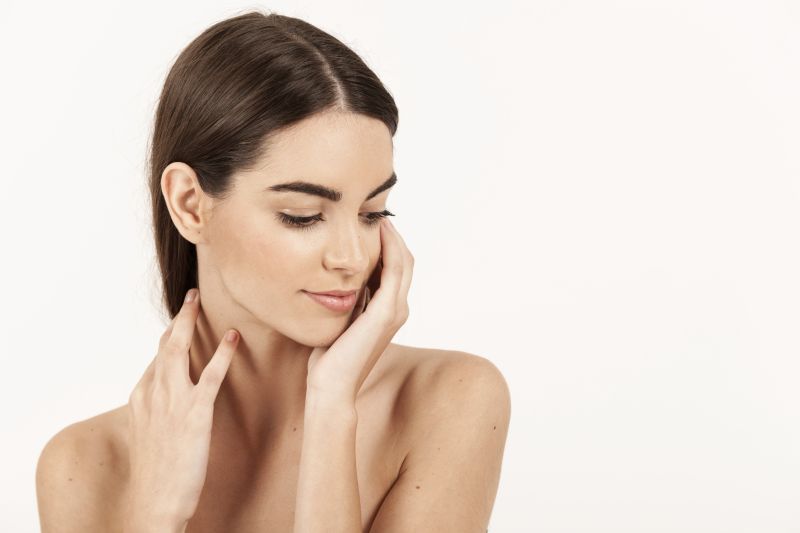Last Updated on January 2, 2023 by Gaga
Though most of us understand that the beauty industry uses synthetic chemicals, many people don’t know that certain commonly-found ingredients in hair products are doing you more harm than good.
Although it sounds logical that the goods we use daily are safe, some hair products may contain ingredients that are linked to health problems. Synthetic chemicals in hair products may cause allergies, skin irritation, and hormonal problems. Some substances may be harmful even at low concentrations when getting in contact with your skin frequently. Plus, once rinsed out, chemicals from hair products will end up in the groundwater and soil.
Chemicals from hair products can get into your body through the skin or you may inhale them when using hair sprays. To avoid harmful side effects, you need to choose your daily products carefully.

One of the best ways you can reduce your exposure to chemicals is by purchasing products that are labeled as organic or natural.
Read Your Shampoo’s Label
Most people don’t care about the ingredient list when purchasing hair shampoo. Reading product labels can be confusing because the ingredients are usually listed as chemical compounds. In addition to that, the average user is not informed about the possible side effects of chemicals in hair shampoos. However, this should not deter you from reading the labels before making a purchase.
Here is an easy way to get information about harmful ingredients in hair shampoo before purchasing it.
The Environmental Working Group Skin Deep Database is an organization that analyses personal care products to inform you about the ingredients. They also rate the overall safety of these products.
How to Make Sure that Your Shampoo is Safe?
First, you need to visit the EWG Skin Deep environmental group’s website and type in the search bar the name of the product you have in mind. When you type the name of your shampoo, you will get a hazard score based on the ingredients. Each ingredient is classified as having a low, medium, or highly harmful health and environmental impact.
There can be possible outcomes, ranging from one to ten (with 10 being the worst score possible). Here is how to interpret the results:
- The most toxic products appear in red (7-10). You should stay away from them because they contain the most harmful ingredients.
- Orange-colored products (3-6) include ingredients with a moderate toxicity level.
- Green products (1-2) contain only non-toxic ingredients.

In some cases, searching using the product name may not return any results because the EWG database doesn’t have data about each product on the market. Also, certain products may be sold under different brand names. To bypass the problem try using the company name, brand, or anything related to the product. This way you can get a list of products associated with a company. Take a look at the ratings of their products to get a general impression of how a particular company cares about its customers’ well-being. If your current shampoo manufacturer has a lot of “reds”, consider switching to a different brand.
If you do not get any results by searching for the product, brand name, or company, you can analyze the ingredients on the label. It may seem like a time-consuming task, but you do not have to go through the entire ingredient list. When you see the first two “red” or “orange” scores, you will know that the product doesn’t meet your criteria.
A helpful tip is that many of the ingredients can be classified into recognizable groups:
- The PEG-s are orange and you should avoid them at all costs
- The parabens are orange or red and you can easily spot them due to the paraben suffix in their name.
After analyzing several products, you will become familiar with the toxicity level of commonly used ingredients in hair shampoos, so you don’t need to check them again.
You can also get information on the Campaign for Safe Cosmetics and Cosmetics Info websites.
Bad Ingredients in Hair Shampoo
“Fragrance” is the term that companies use to hide synthetic chemicals that can cause respiratory problems or migraines. To stay on the safe side you can buy a fragrance-free shampoo or one with essential oils.
The most common “red” chemicals in conventional hair shampoos are Benzyl Salicylate, Butylparaben, Cocamide DEA, DMDM Hydantoin, Fragrance, Geraniol, Isobutylparaben, Isopropylparaben, Lilial, Methylisothiazolinone, Propylparaben, and Retinyl Palmitate.

Shampoo Ingredients You Should Avoid
The most common “orange” compounds in commercial hair shampoos are Cocoamidopropyl Betaine, Diazolidinyl Urea, Ethylparaben, Hexyl Cinnamal, Iodopropynyl Butylcarbamate, Lecithin, Limonene, Linalool, Methylchloroisothiazolinone, Methylparaben, Octinoxate/Ethylhexyl Methoxycinnamate, PEGs, Phenoxyethanol, Polyquaternium-7, Propylene Glycol, Sodium Benzoate, Sodium Laureth Sulfate, Sodium Lauroyl Sarcosinate, Sulisobenzone/Benzophenone, and Tocopheryl Acetate (vitamin E).
Many dandruff shampoos contain harmful ingredients like Coal Tar, Selenium Sulfide, Zinc Pyrithione, and Ketoconazole.
Takeaway
Once you start reading shampoo labels, the way you shop for beauty products will change. The benefit of this new approach is that you can limit your exposure to harmful chemicals. Using natural and organic hair products is good for your overall health in the long term. The time spent on checking product labels is worth it!

Gaga is a blogger and founder of the Softer Hair website. She often says that insomnia is to blame for her first blogging attempts. Being the night owl, she hated the morning alarm. She left her office job and returned to what she loved most - writing.


I went on Amazon and saw that Maple Holistics is chemical-free so I bought from them.